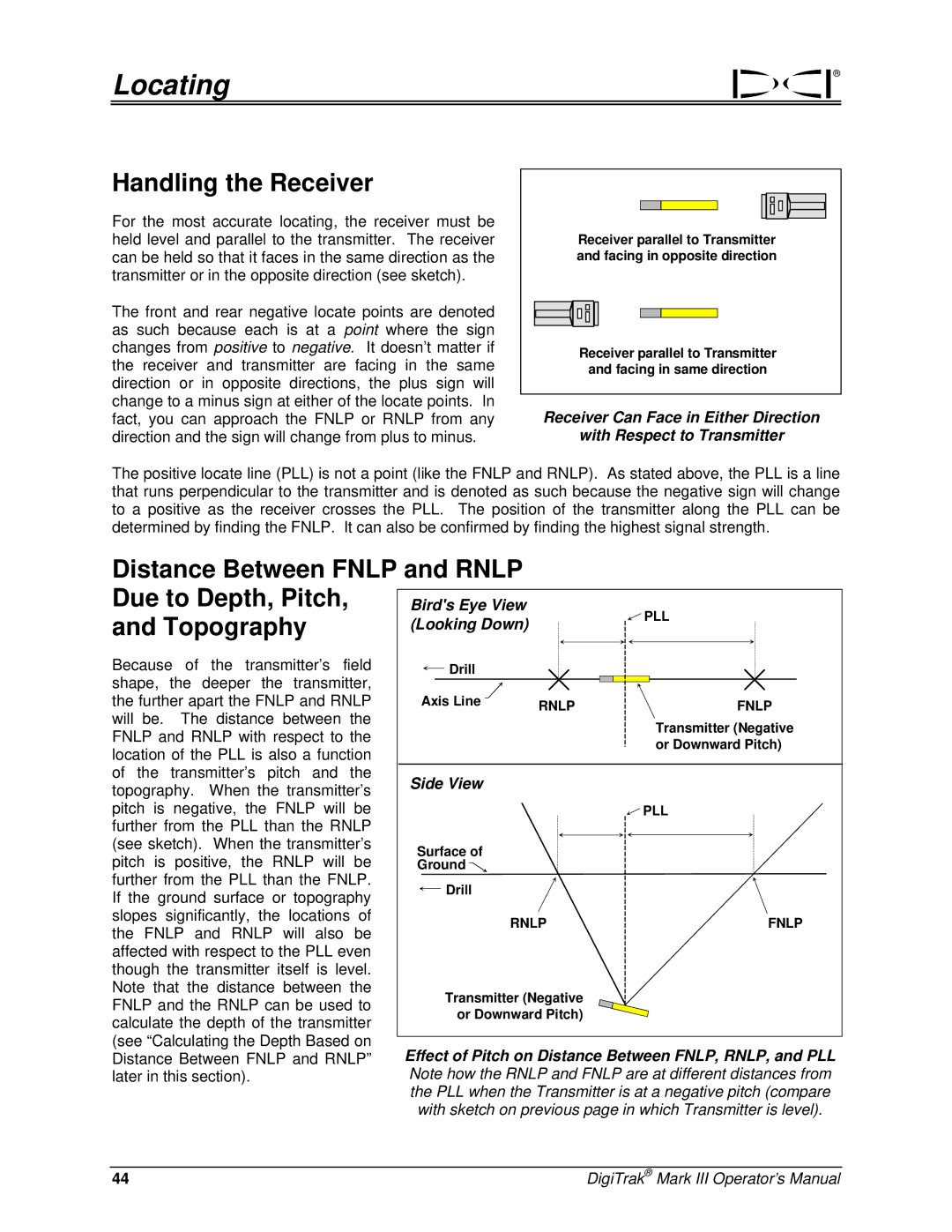
Locating
Handling the Receiver
For the most accurate locating, the receiver must be held level and parallel to the transmitter. The receiver can be held so that it faces in the same direction as the transmitter or in the opposite direction (see sketch).
The front and rear negative locate points are denoted as such because each is at a point where the sign changes from positive to negative. It doesn’t matter if the receiver and transmitter are facing in the same direction or in opposite directions, the plus sign will change to a minus sign at either of the locate points. In fact, you can approach the FNLP or RNLP from any direction and the sign will change from plus to minus.
®
Receiver parallel to Transmitter and facing in opposite direction
Receiver parallel to Transmitter and facing in same direction
Receiver Can Face in Either Direction
with Respect to Transmitter
The positive locate line (PLL) is not a point (like the FNLP and RNLP). As stated above, the PLL is a line that runs perpendicular to the transmitter and is denoted as such because the negative sign will change to a positive as the receiver crosses the PLL. The position of the transmitter along the PLL can be determined by finding the FNLP. It can also be confirmed by finding the highest signal strength.
Distance Between FNLP and RNLP Due to Depth, Pitch,
and Topography
![]() PLL
PLL
Because of the transmitter’s field shape, the deeper the transmitter, the further apart the FNLP and RNLP will be. The distance between the FNLP and RNLP with respect to the location of the PLL is also a function of the transmitter’s pitch and the topography. When the transmitter’s pitch is negative, the FNLP will be further from the PLL than the RNLP (see sketch). When the transmitter’s pitch is positive, the RNLP will be further from the PLL than the FNLP. If the ground surface or topography slopes significantly, the locations of the FNLP and RNLP will also be affected with respect to the PLL even though the transmitter itself is level. Note that the distance between the FNLP and the RNLP can be used to calculate the depth of the transmitter (see “Calculating the Depth Based on Distance Between FNLP and RNLP” later in this section).
Axis Line | RNLP | FNLP |
| ||
|
| Transmitter (Negative |
|
| or Downward Pitch) |
Side View
| PLL |
Surface of |
|
Ground |
|
Drill |
|
RNLP | FNLP |
Transmitter (Negative or Downward Pitch)
Effect of Pitch on Distance Between FNLP, RNLP, and PLL Note how the RNLP and FNLP are at different distances from the PLL when the Transmitter is at a negative pitch (compare with sketch on previous page in which Transmitter is level).
44 | DigiTrak® Mark III Operator’s Manual |
